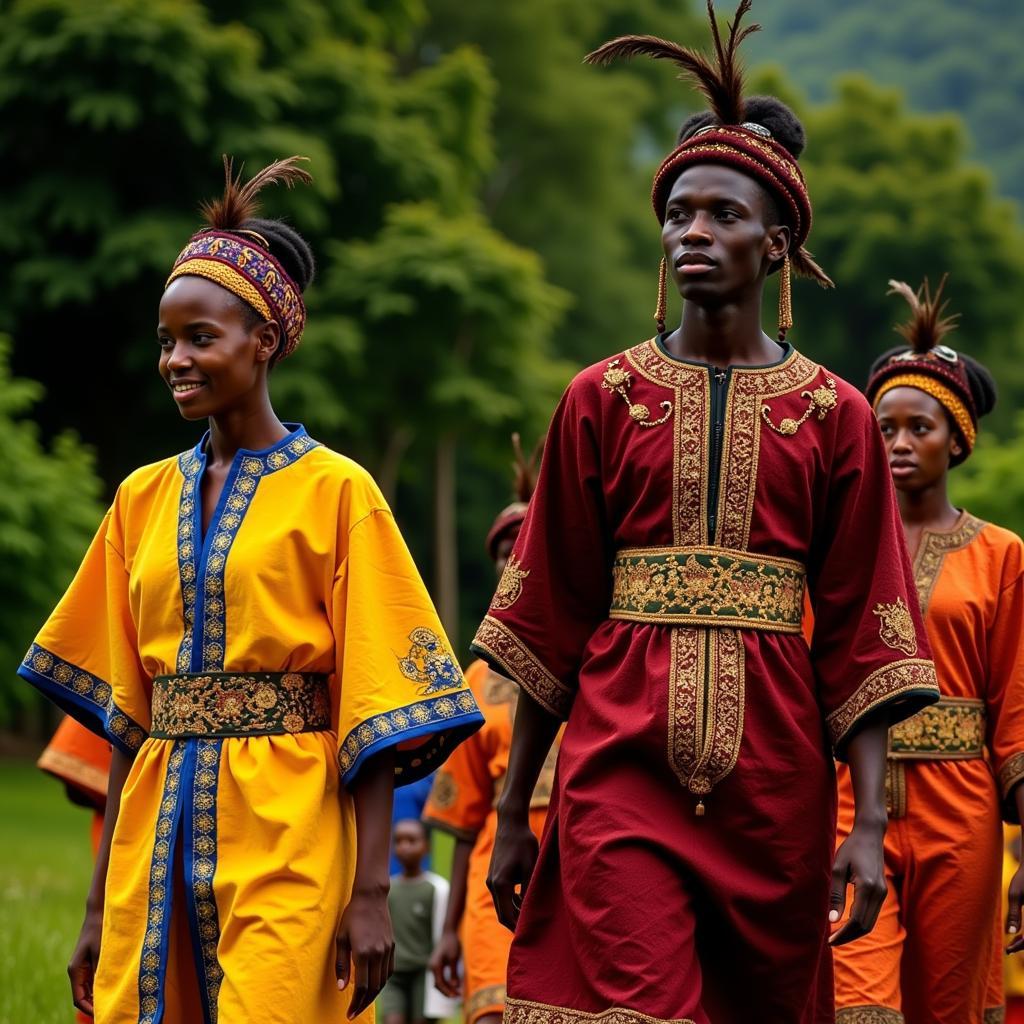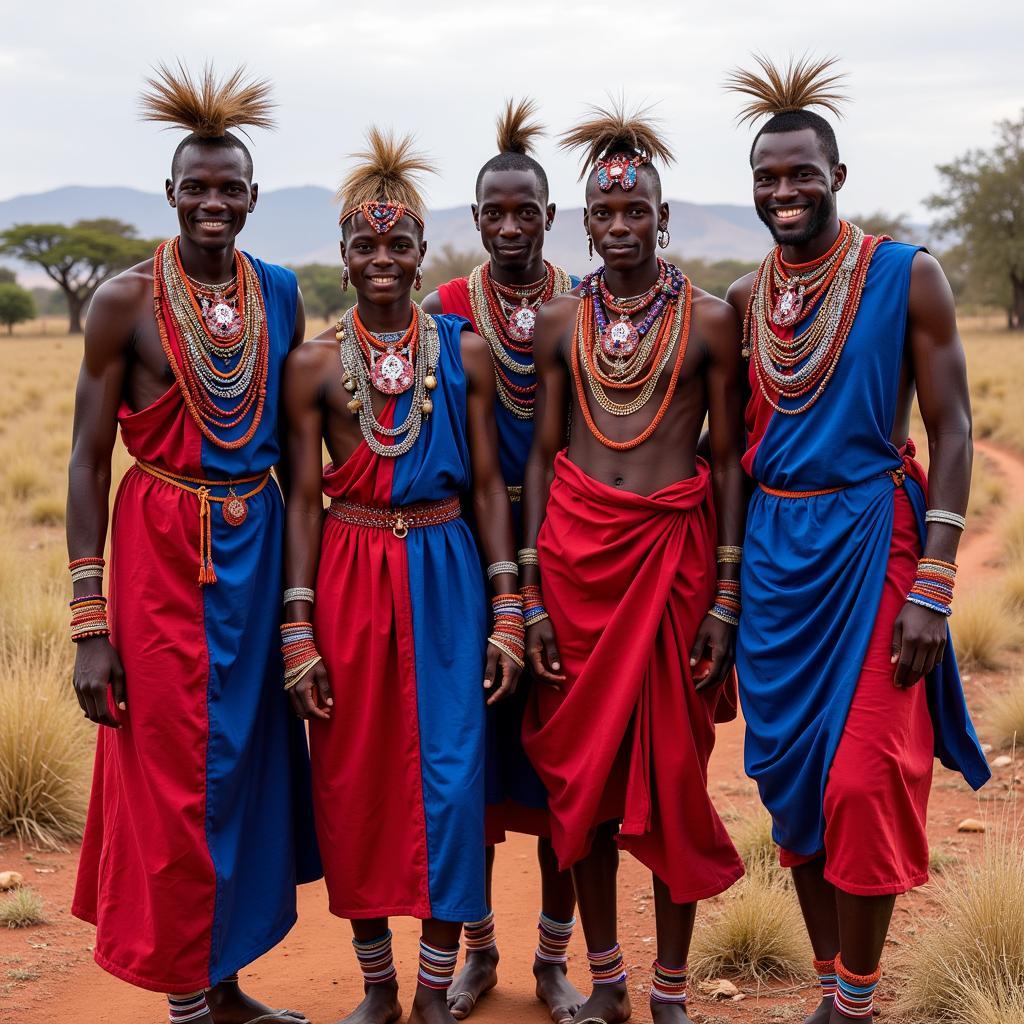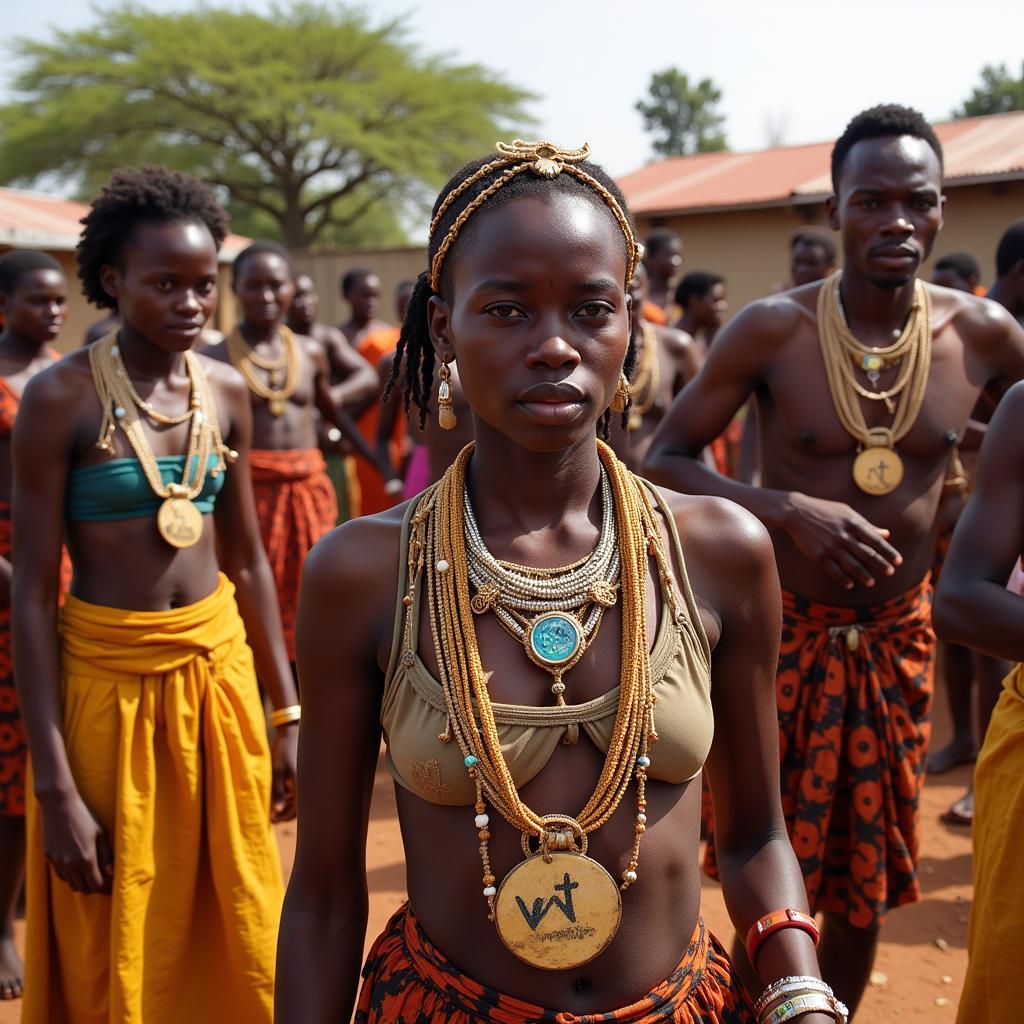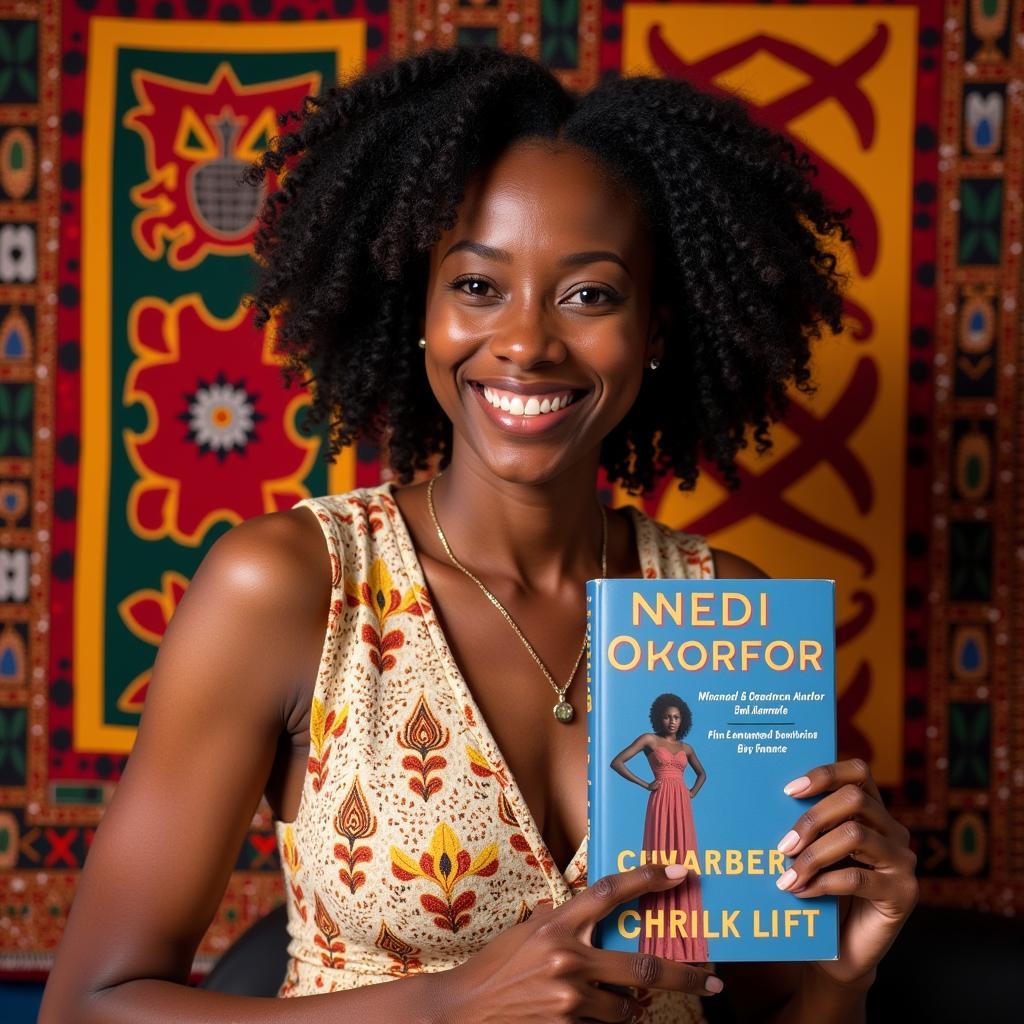African Costume for Dance: A Vibrant Celebration of Culture
African Costume For Dance is more than just clothing; it’s a vibrant expression of culture, history, and spirituality. These costumes aren’t simply decorative; they play a vital role in storytelling, rituals, and celebrations across the diverse continent. From the elaborate headdresses of Maasai warriors to the colorful raffia skirts of West African dancers, each garment tells a story, connecting the wearer to their ancestors and community. Let’s delve into the captivating world of African dance costumes and explore their rich symbolism and significance.
The Significance of African Dance Costumes
African dance costumes are deeply intertwined with the dances themselves. They enhance the movements, adding layers of meaning and visual spectacle. The costumes often incorporate symbolic colors, patterns, and materials that reflect the specific dance’s purpose, whether it’s a celebration of harvest, a rite of passage, or a tribute to the gods. They can represent animals, spirits, or natural elements, further enriching the narrative of the dance. Many costumes also utilize masks, which can transform the dancer into another being entirely, adding a mystical element to the performance.
You can find more about specific costumes here: african jungle dance costumes.
The materials used in African dance costumes are often locally sourced and reflect the natural environment. These materials can range from animal hides and feathers to woven fabrics and plant fibers. The choice of material can also have symbolic meaning. For instance, certain shells might represent prosperity, while specific feathers might symbolize power or royalty.
Exploring Regional Variations in African Dance Costumes
Across the vast expanse of Africa, dance costumes vary significantly, reflecting the unique traditions and beliefs of each region. In West Africa, vibrant colors and intricate patterns are common, often seen in the flowing robes and headdresses worn for celebratory dances. East African costumes often feature elaborate beadwork and animal hides, reflecting the close connection to nature and wildlife. Southern African costumes can incorporate intricate embroidery and bold geometric designs, each with its own specific meaning. Understanding these regional variations provides a deeper appreciation for the diverse cultural landscape of Africa.
 West African Dance Costumes: Vibrant Colors and Intricate Patterns
West African Dance Costumes: Vibrant Colors and Intricate Patterns
What are common materials used in African dance costumes?
Common materials used in crafting African dance costumes include natural fibers like raffia and cotton, animal hides, feathers, beads, shells, and wood. These materials are often locally sourced and hold cultural significance.
North African dance costumes, influenced by Arabic traditions, often feature flowing fabrics and intricate embroidery, while Central African costumes might utilize natural dyes and plant fibers to create unique and symbolic designs. Each region’s costumes contribute to the rich tapestry of African dance traditions.
 East African Maasai Dance Costumes: Beadwork and Animal Hides
East African Maasai Dance Costumes: Beadwork and Animal Hides
How do African dance costumes enhance the performance?
African dance costumes play a vital role in enhancing the performance by amplifying movements, adding visual interest, and conveying symbolic meaning. Flowing fabrics create dramatic effects, while masks and headdresses transform dancers into different characters or spirits.
For a deeper understanding of African dance moves, costumes, and history, check out this informative video: african dance moves costumes & history video.
The Evolution of African Dance Costumes
While rooted in tradition, African dance costumes also evolve, reflecting changing times and influences. Contemporary designers are incorporating modern materials and techniques while still honoring the rich cultural heritage embedded in these garments. This evolution ensures that African dance costumes remain vibrant and relevant, continuing to tell the stories of Africa to future generations.
Conclusion
African costume for dance is a powerful expression of cultural identity, artistry, and storytelling. From the intricate details to the symbolic materials, each costume contributes to a vibrant and dynamic tradition that continues to captivate audiences worldwide. By understanding the significance and regional variations of these costumes, we gain a deeper appreciation for the rich cultural tapestry of Africa. Exploring the world of African dance costumes is a journey into the heart of a continent brimming with creativity and tradition. Want to own a piece of this vibrant culture? You might be interested in finding african dance costumes for sale.
FAQ
- What is the significance of masks in African dance costumes?
- How are African dance costumes made?
- Where can I learn more about African dance?
- What are some common African dance styles?
- How do I choose the right African dance costume?
- Are there specific costumes for different ceremonies?
- How has colonization impacted traditional African dance costumes?
Common Scenarios and Questions:
- Scenario: Someone planning a cultural event wants to incorporate authentic African dance.
- Question: What type of costumes would be appropriate for a specific region or dance style?
- Scenario: A student researching African culture needs information on the symbolism of dance costumes.
- Question: What do specific colors, patterns, or materials represent in different African cultures?
- Scenario: A traveler wants to purchase an African dance costume as a souvenir.
- Question: Where can I find authentic and ethically sourced African dance costumes?
Further Exploration:
You might also be interested in learning more about specific African dances like the Bongo dance, with its unique costumes: african bongo dance costumes. Or perhaps you’d like to see African folk dance in action: african folk dance gif.
Need Assistance?
For any inquiries or assistance related to African dance costumes and culture, please don’t hesitate to contact us. Call us at +255768904061, email us at kaka.mag@gmail.com, or visit us at Mbarali DC Mawindi, Kangaga, Tanzania. Our dedicated customer service team is available 24/7 to assist you.

